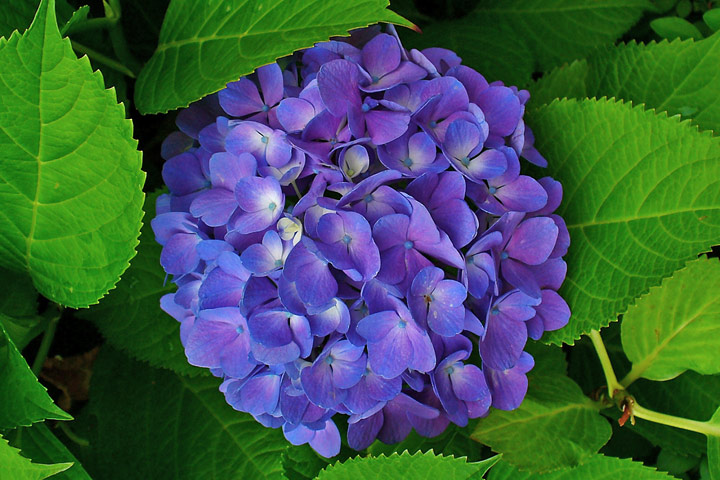
Hydrangeas are a popular shrub for the homeowner. From mid-summer until fall, they produce a glorious show in gardens. Versatile shrubs, they thrive in both sandy coastal soils and in shady woodland sites.
When we think of hydrangeas, we usually think of bigleaf hydrangeas (Hydrangea macrophylla) and mountain hydrangeas (Hydrangea serrata). These are deciduous shrubs that are native to seacoasts and mountain valleys in Japan and divided into two types by the shape of their flowers.
Mophead types (sometimes called hortensias) have large, ball-shaped flower clusters. Lacecap types have flat, delicate clusters. The sheer number of choices among hydrangea species, hybrids, and cultivated varieties can be overwhelming even for the most advanced gardeners. How do you choose from among the hundreds of mopheads, climbers, lacecaps, and oakleafs, to name just a few?
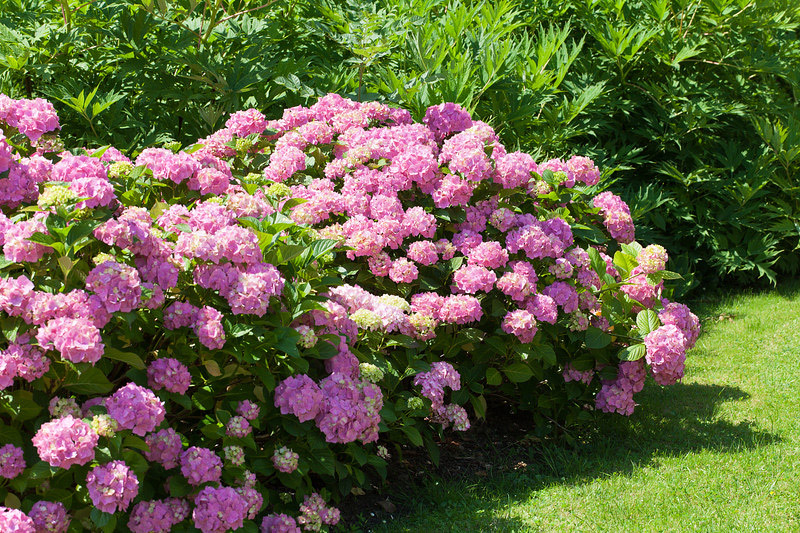
And how do you care for hydrangeas in American gardens? In Hydrangeas for American Gardens, Michael Dirr comes to the rescue with this refreshingly forthright and practical guide to growing these distinctive shrubs and climbers.
Hydrangeas are hardy from zones 5 to 9 and range from 3 to 6 feet tall. They present few challenges in well-drained soil that is amended with organic matter. The biggest problem that gardeners face is a lack of flowers. Here are some simple steps for troubleshooting:
Why Aren’t My Hydrangeas Blooming
- One common cause for lack of flowers is too much shade. Hydrangeas do well in partial shade provided by tall deciduous trees. Plant your hydrangeas in an area where they receive morning sun. They also thrive in full sun but may need extra water on hot summer days. (Bigleaf hydrangeas do particularly well in full sun in coastal areas once they are established.)
- Cultural practices are sometimes the cause of the lack of flowers. If hydrangeas are given too much high-nitrogen fertilizer, they may produce lush foliage with few flowers. Good watering practices are also important for healthy plants. Hydrangeas benefit from 1 inch of water a week during summer (unless it rains). Bigleaf hydrangeas in full sun may need up to 2 inches during the hottest summer days.
- Winter dieback can be a problem in colder regions. Plant your hydrangeas in a sheltered spot or try creating a burlap windscreen or a burlap frame filled with dry leaves. Winter temperatures tend to be more constant on a north- or east-facing site. The south and west side of your property will heat up in the winter sun and may cause hydrangea buds to open prematurely.
- The biggest culprit for a lack of flowers is incorrect pruning. Bigleaf hydrangeas flower on old wood. Hydrangeas tend to need minimal pruning, but if you would like to reduce the size of the plant or prevent it from flopping over too much, technically the best time to prune these shrubs is immediately after flowering. The easiest thing to do at this time is take out some of the older canes, which will reduce crowding and encourage new growth. However, when cold winters kill the tips of the branches, prune in spring. Before the hydrangea starts to leaf out, remove deadwood and cut the stems back to a healthy set of buds. If you have an established shrub, you can also take out several of the older stems at this time. Make sure that you do not remove too many buds; otherwise you will loose your blooms.
Ever-Blooming Hydrangeas
If all of this sounds too complicated, there is hope for the hydrangea enthusiast. New cultivars have been introduced in recent years that flower on both old (last season’s) and new (this season’s) stems. These are sometimes referred to as (ever-blooming hydrangeas). They flower almost continuously throughout the season.
These ever-blooming cultivars include: Hydrangea macrophylla ‘All Summer Beauty’, ‘David Ramsey’, ‘Decatur Blue’, Endless Summer, Mini Penny, ‘Oak Hill’, and ‘Penny Mac’, Hydrangea serrata ‘Blue Deckle’, and ‘Coerulea Lace’.
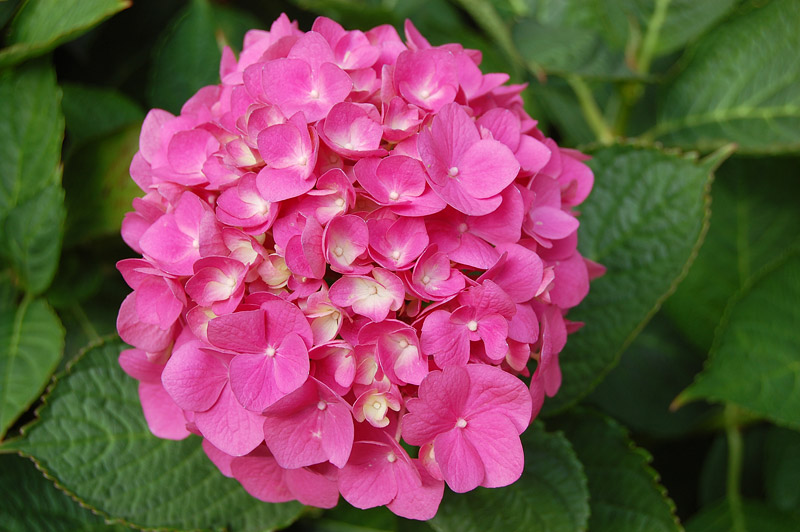
Long Blooming Hydrangeas
There are other vigorous old and new cultivars that flower over a very long season. These are sometimes called free-flowering hydrangeas. They include Hydrangea macrophylla‘Altona’, ‘Ami Pasquier’, ‘Europa’, ‘Forever Pink’, ‘Frillibet’, ‘General Vicomtesse de Vibraye’, ‘Lilacina’, ‘Lanarth White’, ‘Madame Emile Mouillere’, ‘Mousseline’, ‘Nikko Blue’, and Hydrangea serrata ‘Fuji Waterfall’.
Good mountain hydrangea (Hydrangea serrata) cultivars include: ‘Beni-gaku’, ‘Geisha Girl’, ‘Kiyosumisawa’, , ‘Miranda’, ‘Miyama-yae-murasaki’, ‘Tiara’, ‘Woodlander’, and ‘Yae-no-amacha’.
Changing the Color of Hydrangea Flowers
The color of bigleaf hydrangeas is not only determined by cultivar, but also by the amount of aluminum in the soil and the soil pH. The soil pH will determine how available aluminum is to the plant. Acidic soil will give you blue flowers (aluminum available to the plants), and alkaline soil will give you pink flowers (aluminum unavailable to the plants).
To decrease the acidity of your soil (to change flowers from blue to pink), add hydrated lime to your soil in the spring. To increase the acidity of the soil (to change flowers from pink to blue), add aluminum sulfate to your soil in the spring or mulch with oak-leaf mulch.
Other Species of Hydrangea to Grow
Aside from the ever-popular bigleaf and mountain hydrangeas, there is a wonderful selection of other species for the home gardener to choose from.
- The oak-leaf hydrangea (Hydrangea quercifolia) is slowly becoming a staple of the East coast garden. It is hardy to zone 4. This beautiful south-eastern North American native has ornate peeling bark, large-flowering panicles that age well, and wonderful red fall color. It flowers on old wood and should be pruned immediately after flowering. It is a low-maintenance shrub that needs little pruning; simply remove dead wood and cut back a few stems every few years to maintain a full plant. It thrives in partial shade, but can tolerate quite a bit of sun in this area. Some good cultivars are ‘Alice’, ‘Amethyst’, ‘Pee Wee’, ‘Snow Flake’, and ‘Snow Queen’.
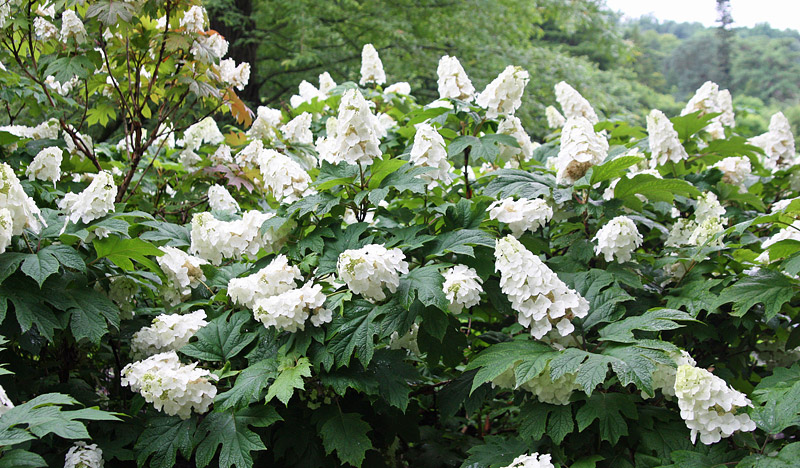
- Another hardy hydrangea is the smooth hydrangea (Hydrangea arborescens). An East coast native, this hydrangea does best in partial shade to full sun. It grows from 4 to 6 feet tall and up to 6 feet wide. Smooth hydrangeas flower on new wood. You can treat them just like a perennial and cut them back (either to the ground or back to 1–2 feet) in the fall, or you can leave them for wonderful winter interest and cut them back in the spring. Some popular varieties are ‘Annabelle’, ‘Grandiflora’, and White Dome™.
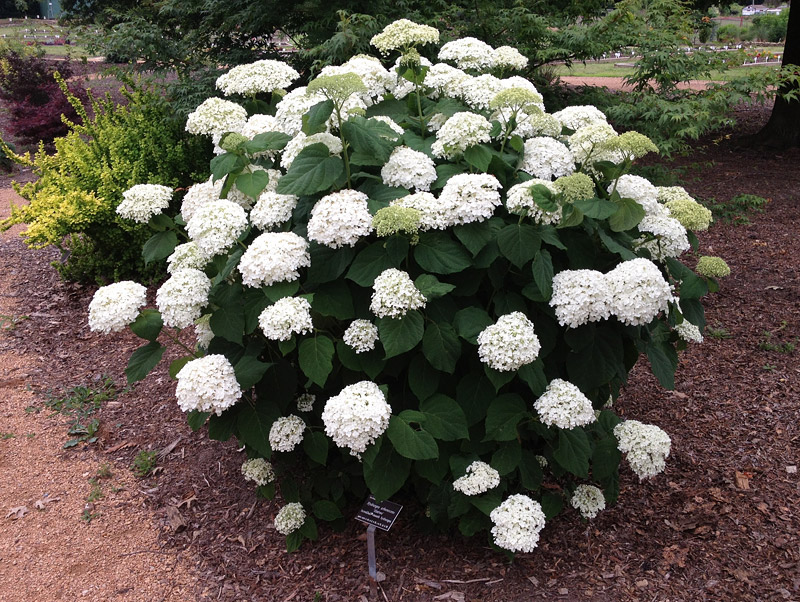
- Panicle hydrangeas (Hydrangea paniculata) have long been a staple of the home garden. They can be grown as a shrub or a small tree. They flower on new wood and can be pruned in the spring according to the desired form. They can be kept small by cutting back to 1–3 feet or allowed to grow much larger.
- For a small tree, prune the crown of the tree to 3–5 main branches. As with all hydrangeas, remove any weak or dead branches. Panicle hydrangeas tend to flower later in the season than other species. The large-flower panicles can range from white to pale pink to lime green. Cultivars include: ‘Burgundy Lace’, ‘Chantilly Lace’, ‘Grandiflora’, ‘Limelight’, ‘Little Lamb’, ‘Pee Wee’, and the late-flowering ‘Tardiva’.
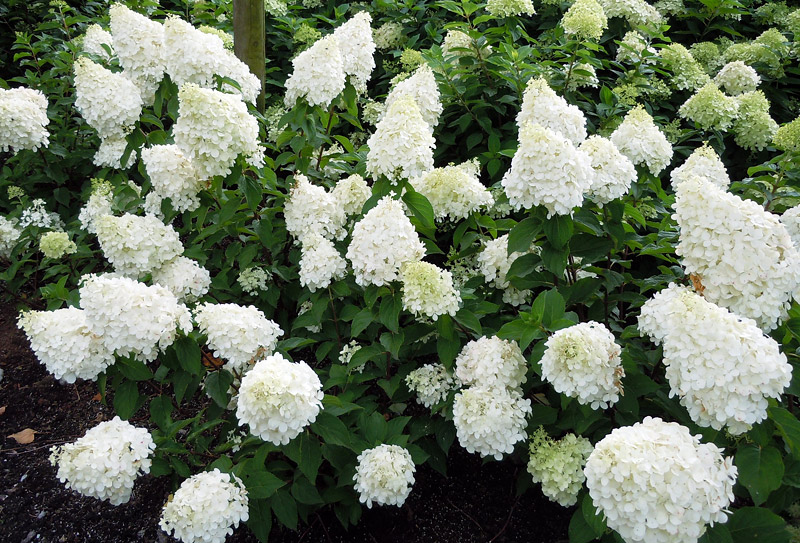



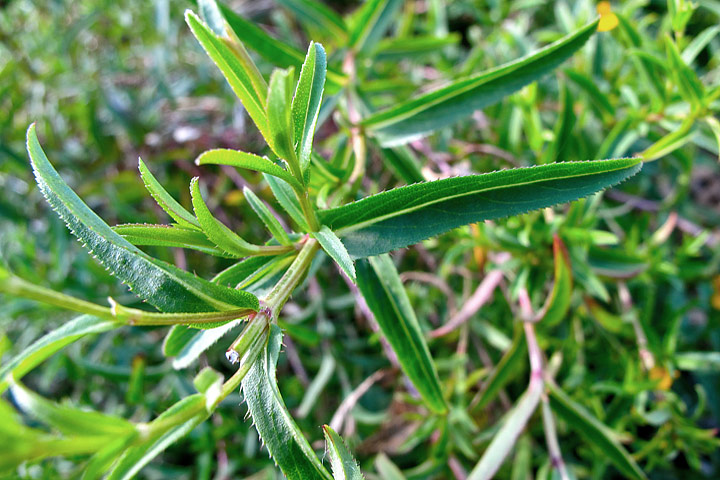
Leave a Reply